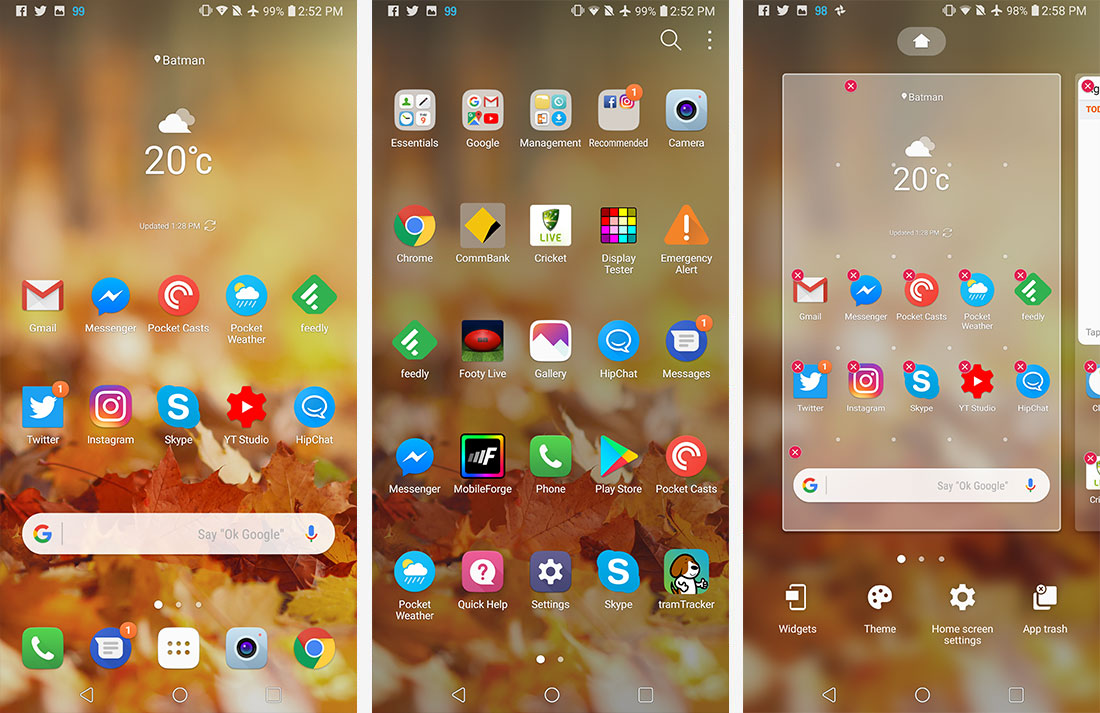Software
Coming straight from using the wonderful Pixel 2 XL's clean version of Android to LG's skinned Android on the V30 came as a bit of a shock. Going from Google's well-executed vision for Android to something less refined is never a move you want to make.
The V30 runs Android 7.1.2 out of the box, though an upgrade to Android 8.0 is in the pipeline. LG's track record with security updates is not terrible for an OEM, but it's still a fair way behind Google and their Pixel phones. As we say in most smartphone reviews, if you want fast updates and the most secure experience, it's a Pixel or bust.

My first experience with the V30's software was less than positive, to say the least. After the setup process, you get blasted with pop-ups and dialog boxes at every turn, as LG wants to explain every little feature they've included in this phone. It's an overwhelming experience and, in many cases, largely unnecessary. Does LG really need to ask what order of navigation buttons you'd prefer, or explicitly point out now-ubiquitous Android features like multi-window, or ask if I want to resize the keyboard? To me, these prompts were annoying more than anything.

On top of this, the V30 includes bloatware apps. There's two gallery apps and two music apps, so you're bound to run into irritating 'which app should I use?' prompts straight out of the box. There's also first-party apps for notes, tasks, and fitness plus Instagram and Facebook pre-installed. The worst of all is probably LG SmartWorld, which is a just awful mash of themes, media content, and apps. And I haven't even described the carrier bloatware some models come with, which is apparently horrendous.
In any case, no Android phone should have a duplicate app store, ever. The Play Store is the ubiquitous, superior solution. On the V30, first-party app updates are not performed through the Play Store, instead through a separate utility. It's just a mess.

The settings screen is also a convoluted, confusing mess with tabs, subsections, and subcategories everywhere. Despite LG splitting up the settings screen in so many ways, they've still left some features behind nondescriptive headers like "more" or "advanced", which makes the whole thing hard to navigate. There's also a lot of features in the settings menu, enough that in some ways the more basic toggles are buried behind niche features and cool but not necessarily essential options.
That's not to say there are no good additions to LG's skin. The always-on display is great, and I quite like the notification pane with its plethora of quick access toggles. But stock Android provides a better experience with less junk, and the extra features Google adds to their Pixel handsets are meaningful, useful additions.

It also continues to surprise me how many cool or even essential things are disabled by default in LG's software. The always-on display, for example, is so useful it should be enabled right out of the box. Predictive text, a crucial feature of smartphone keyboards, is also inexplicably disabled by default. The better home launcher - the one with the app drawer - is an optional change too, rather than the default.
LG needs to seriously polish their software offering if they're going to provide the clean, cohesive experience of the best Android devices.
